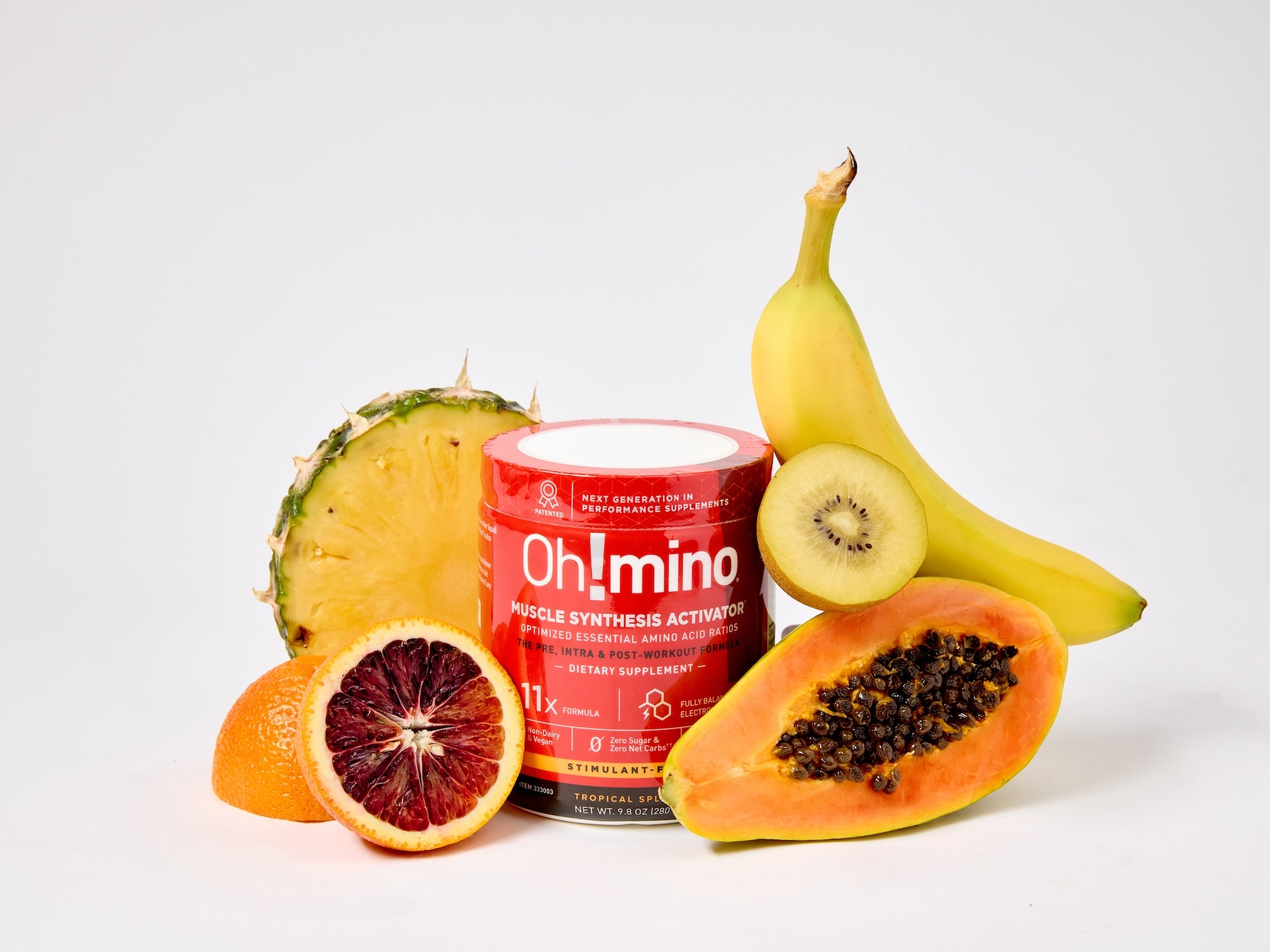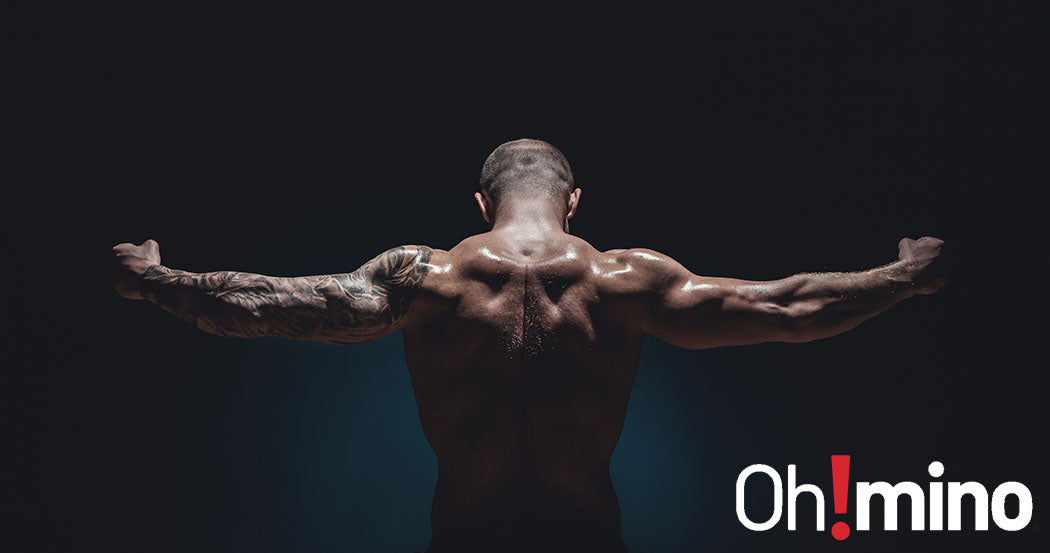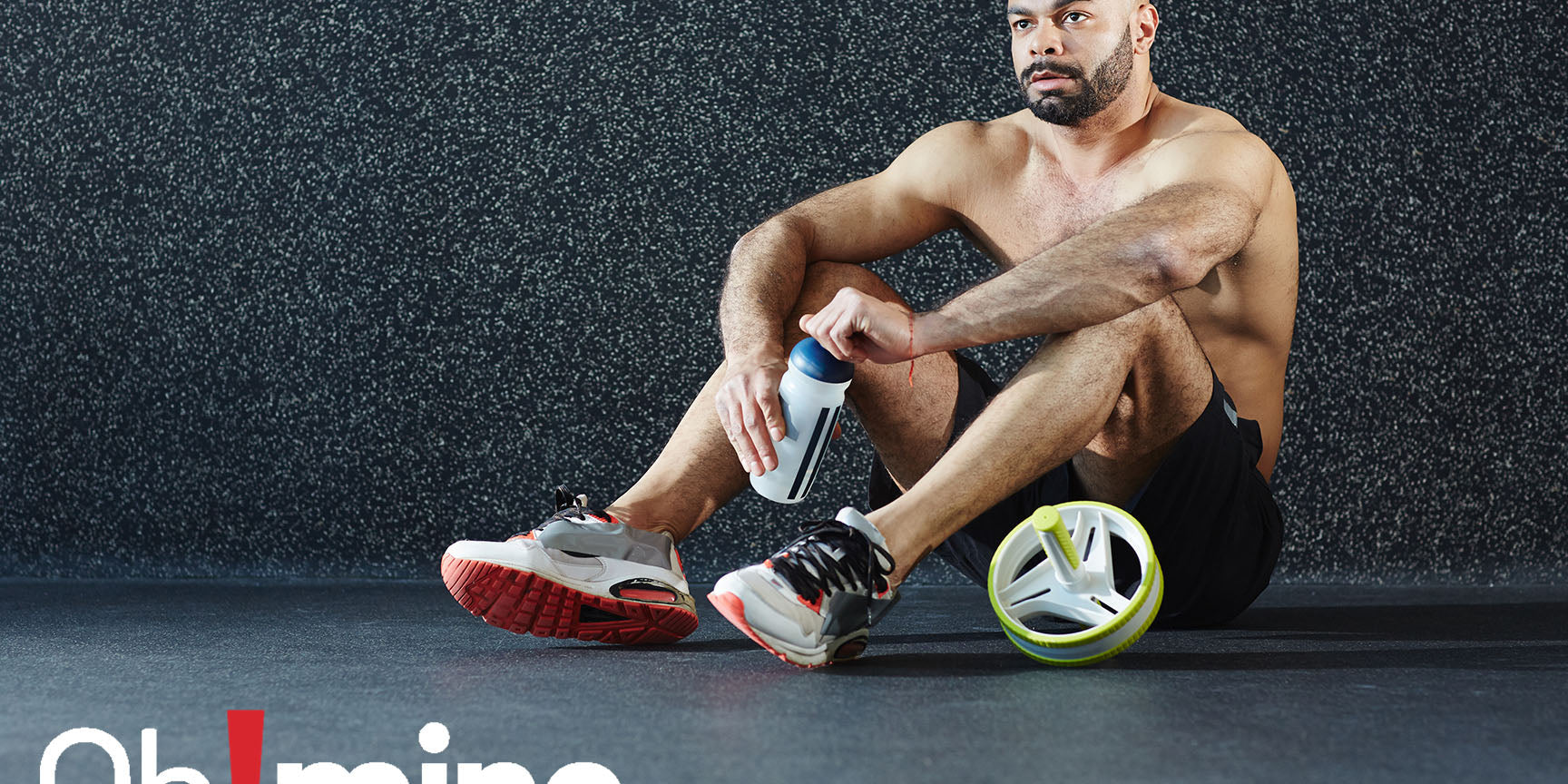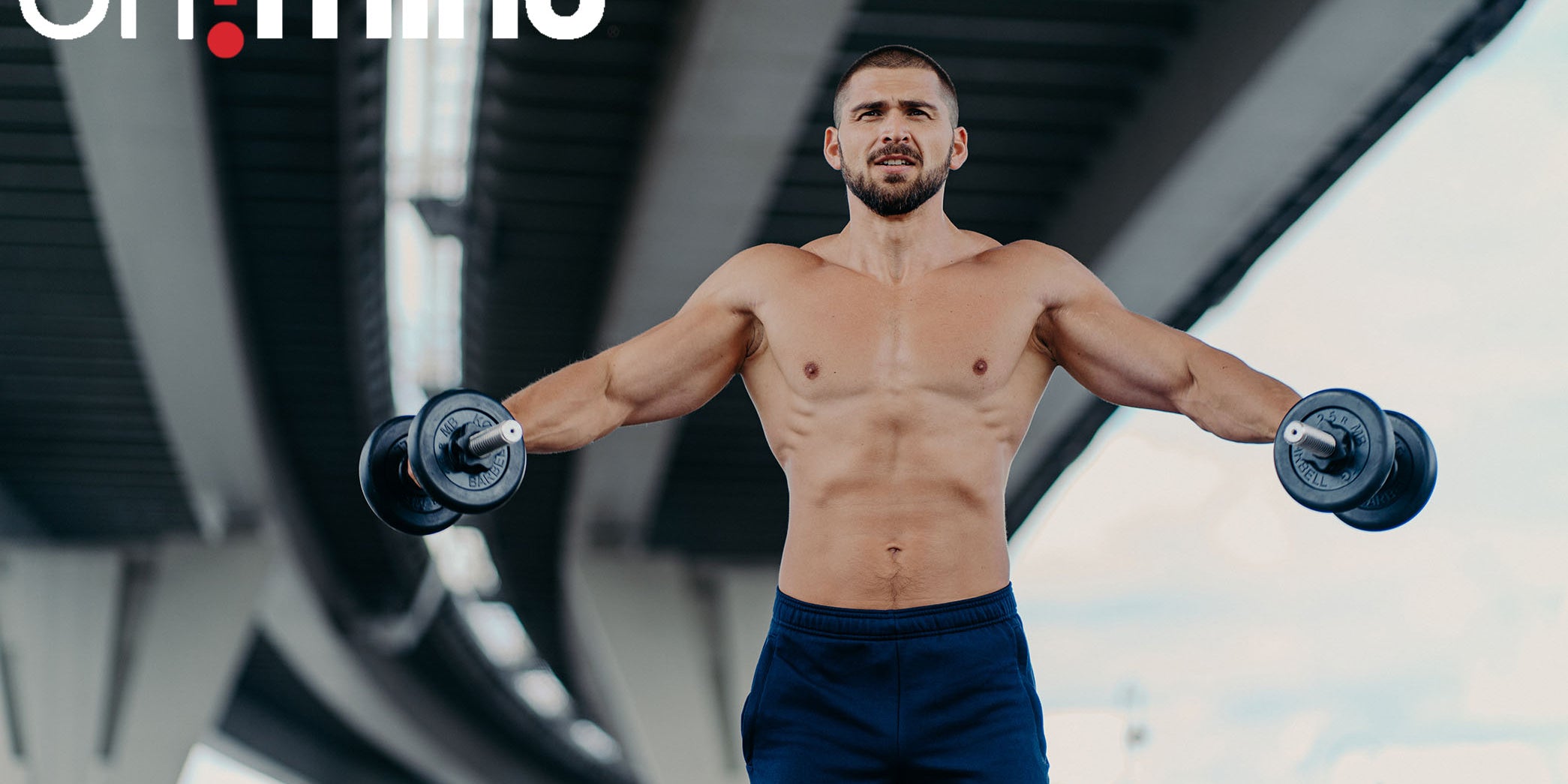Key Takeaways
-
The latissimus dorsi muscles are the primary drivers of back width. Focusing on exercises that maximize lat development like pull-ups and lat pull-downs will create that coveted V-taper appearance.
-
Compound exercises provide the most efficient muscle development. Pull-ups, rows, and lat pull-downs work multiple muscle groups simultaneously, maximizing your time investment and overall upper body strength.
-
Proper form trumps heavy weight every time. Maintaining correct technique prevents injuries and ensures target muscles receive maximum stimulation for optimal growth and development.
-
Complete amino acid nutrition supports muscle recovery and growth. Supplements like Oh!mino® Muscle Synthesis Activator provide all nine essential amino acids in optimal ratios, supporting muscle protein synthesis and reducing recovery time between intense back training sessions.
Building Your Way to a Powerful V-Shaped Back
There's no better symbol for strength than having a wide back. A lot of men work towards having a back shaped like an inverse triangle: wide shoulders, wide back, and narrow waist. But let's focus here only on our backs.
So how do you get a wider back? If you're a beginner looking to build your first pull-up or an experienced lifter wanting to break through plateaus, this comprehensive guide will provide you with the knowledge and tools needed to transform your back into a powerful, V-shaped masterpiece.
|
Oh!mino©: Elevate Your Performance. Accelerate Your Recovery. Science-Backed Superiority for Every Fitness Journey Power Your Goals with Proven Results:
The Oh!mino® Advantage: ✓ Patented formula that’s 11x more effective than protein, 20x more effective than BCAAs Choose Your Perfect Formula: Available in refreshing Tropical Slash or Berry Blast flavors, with stimulant-free or caffeinated options. Prefer capsules? We've got you covered with the same powerful formula. Take before, during, or after training—one solution for your entire workout. |
Understanding Back Muscle Anatomy: The Foundation for Growth
First, let's see how the back is built so we can understand what muscles to target. Back muscles are divided into three layers: the superficial layer, intermediate layer, and deep layer.
Superficial Layer Muscles

Target the muscles of the superficial layer if you want to get a wider back.
Back muscles from the superficial layer are:
1. Trapezius
This diamond-shaped muscle extends from the base of your skull to the middle of your back and out to your shoulders. The trapezius is responsible for shoulder elevation, retraction, and rotation.
2. Rhomboid Major and Minor
Located between your shoulder blades, these muscles work to retract the scapulae (pull your shoulder blades together). Strong rhomboids are essential for maintaining proper shoulder positioning during back exercises.
3. Latissimus Dorsi
These are the star players for back width. The lats are large, flat muscles that extend from your armpits down to your lower back. When fully developed, they create the coveted V-taper that makes your waist appear smaller and your upper body more powerful.
Intermediate Layer Muscles
The intermediate layer of back muscles consists of Serratus Posterior superior and inferior. These muscles assist with breathing and rib movement, playing supporting roles in stabilization during heavy lifting.
Deep Layer Muscles
And finally, the deep layer of back muscles consists of:
1. Erector Spinae
This group of muscles runs along your spine and is responsible for keeping you upright. Strong erector spinae muscles are crucial for deadlifts, squats, and maintaining proper posture throughout daily activities.
2. Multifidus
These small but important muscles provide fine-tuned spinal stability and rotation. They work constantly to maintain proper spinal alignment during movement.
3. Quadratus Lumborum
Located in your lower back, this muscle assists with side bending and spine stabilization. A strong QL helps prevent lower back injuries during heavy lifting.
By far, the most important muscles of all these are the Latissimus Dorsi, also known as lats. It's actually a pair of muscles, one on each side of your back. Both of the lats are connecting one of your arms to your spine and combined are the biggest muscles of the upper body.
So the best way to get a wider back is to build your lats on each side. If your lats are big, your back is going to be wide.
Core Exercises for Maximum Back Development
Pull-ups: The King of Back Exercises

Pull-ups will help you sculpt big and strong lats so your back can get that powerful V-shape
Pull-ups are one of the toughest exercises if done correctly. It doesn't really matter which variation you will do; unlike chin-ups, every pull-up variation will engage lats effectively.
Pull-ups are a compound movement that targets your lats and engages your rhomboids, middle traps, rear delts, and biceps. This multi-muscle recruitment makes pull-ups incredibly efficient for building overall back strength and mass.
Lat Pull-downs: Precision Targeting for the Lats

The lat pull-down is a machine-based exercise that specifically targets the Latissimus Dorsi muscle.
The lat pull-down is particularly valuable because it allows you to work your lats through their full range of motion while providing precise load control.
There are three main rules for lat pull-downs:
1. Keep your elbows slightly in front of you and in line with your hips: This positioning ensures optimal lat activation and prevents the exercise from becoming a rowing movement. Your elbows should track in a path that maximizes the stretch and contraction of the lats.
2. Never pull down the weight behind your back: Behind-the-neck lat pull-downs can place your shoulders in a compromised position, increasing injury risk while reducing lat activation. Always pull to your upper chest or collarbone area.
3. Do not pull the weight with your biceps: Focus on initiating the movement with your lats by thinking about pulling your elbows down and back. Your biceps should act as secondary movers rather than primary drivers of the movement.
Rowing Movements: Building Thickness and Density
The best exercises for a thicker back are rows that can be done with either barbells, dumbbells, or on a rowing machine. Some types you could try out include:
1. Barbell Rows: These allow you to handle the heaviest loads and provide excellent overall back development. The bent-over position also strengthens your posterior chain and core stability.
2. Dumbbell Rows: Single-arm variations allow you to work each side independently, helping to correct imbalances while allowing for a greater range of motion. The unilateral nature also challenges your core stability.
3. Cable Rows: These provide consistent tension throughout the movement and allow for various grip positions to target different areas of your back. The seated position also eliminates lower back stress, allowing you to focus purely on your upper back muscles.
Creating an Effective Back Workout Routine
Combining rows with both pull-ups and lat pull-downs is the way to go if you want to build a bigger, stronger, and wider back in the most efficient way possible. Here are some simple routines to go for depending on your fitness level.
|
Level |
Exercise |
Sets |
Repetitions (Reps) |
|
Beginner |
Assisted Pull-ups or Lat Pull-downs |
3 |
8–12 |
|
Seated Cable Rows |
3 |
10–15 |
|
|
Single-arm Dumbbell Rows |
3 |
12–15 per arm |
|
|
Intermediate |
Pull-ups |
4 |
6–10 |
|
Lat Pull-downs (wide grip) |
3 |
10–12 |
|
|
Barbell Rows |
4 |
8–10 |
|
|
Cable Rows (various grips) |
3 |
12–15 |
|
|
Face Pulls |
3 |
15–20 |
|
|
Advanced |
Weighted Pull-ups |
5 |
5–8 |
|
Lat Pull-downs (close grip) |
4 |
8–12 |
|
|
T-Bar Rows |
4 |
8–10 |
|
|
Single-arm Cable Rows |
3 |
12–15 per arm |
|
|
Straight-arm Pull-downs |
3 |
12–15 |
|
|
Reverse Flyes |
3 |
15–20 |
The Role of Nutrition in Back Muscle Development
Building a bigger back requires proper nutrition for muscle growth and recovery. Approximately 0.8–1.2 grams of protein per pound of bodyweight should be your daily goal. This provides the amino acids necessary for muscle protein synthesis and recovery.
Timing your nutrition around workouts can also enhance results. Consuming protein and carbohydrates within 2 hours post-workout can optimize the muscle-building response and replenish energy stores.
So don't miss out on these three exercises. Pull-ups and free-weight variations of rows are the most valuable here because they're compound exercises that use more than one muscle group at a time.
Oh!mino's Support for Your Back-Building Journey
At Oh!mino®, we understand that building an impressive back demands smart recovery and optimal nutrition. Our scientifically-formulated Muscle Synthesis Activator provides the complete amino acid foundation your back muscles need to grow bigger and stronger.

Build the wide, powerful back with the help of Oh!mino® Muscle Synthesis Activator
Every intense back workout creates microscopic muscle damage that requires proper amino acid availability for repair and growth. Oh!mino® Muscle Synthesis Activator delivers a patented blend of all nine essential amino acids (L-Leucine, L-Lysine, L-Threonine, L-Valine, L-Phenylalanine, L-Histidine, L-Isoleucine, L-Tryptophan, and L-Methionine), including the crucial BCAAs (branched-chain amino acids), in precise ratios to support muscle protein synthesis up to 11 times more effectively than traditional protein sources. This means faster recovery, reduced soreness, and the ability to train with greater intensity session after session.
Professional athletes like NBA players and NFL running backs trust Oh!mino® because it works when performance matters most. Whether you're grinding through weighted pull-ups or pushing through high-volume rowing sessions, our formula provides the nutritional support you need to gain strength, build muscle, and recover faster.
Try Oh!mino® Muscle Synthesis Activator today!
Frequently Asked Questions
Should I train back once or twice per week for maximum growth?
For most people, training back 2 times per week provides optimal results, allowing for adequate stimulus while providing sufficient recovery time. Advanced lifters might benefit from higher frequency, while beginners may need more recovery time between sessions.
What's the difference between wide-grip and close-grip pull exercises?
Wide-grip exercises (like wide-grip pull-ups) emphasize the outer portions of the lats, contributing more to back width. Close-grip exercises target the inner lats and middle back muscles more intensely, contributing to thickness and overall back development.
Is it normal to feel soreness in my biceps after back workouts?
Yes, bicep involvement is normal during back exercises since they act as secondary movers in pulling movements. However, if bicep fatigue is limiting your back training, consider using lifting straps to reduce grip demands and allow your back muscles to work more intensively.
Can Oh!mino® help with my back training recovery and results?
Yes, Oh!mino® Muscle Synthesis Activator provides all nine essential amino acids in scientifically optimized ratios, supporting muscle protein synthesis up to 11 times more effectively than whey protein. The complete amino acid profile helps reduce muscle soreness, speeds recovery between workouts, and provides the building blocks necessary for building bigger, stronger back muscles.





